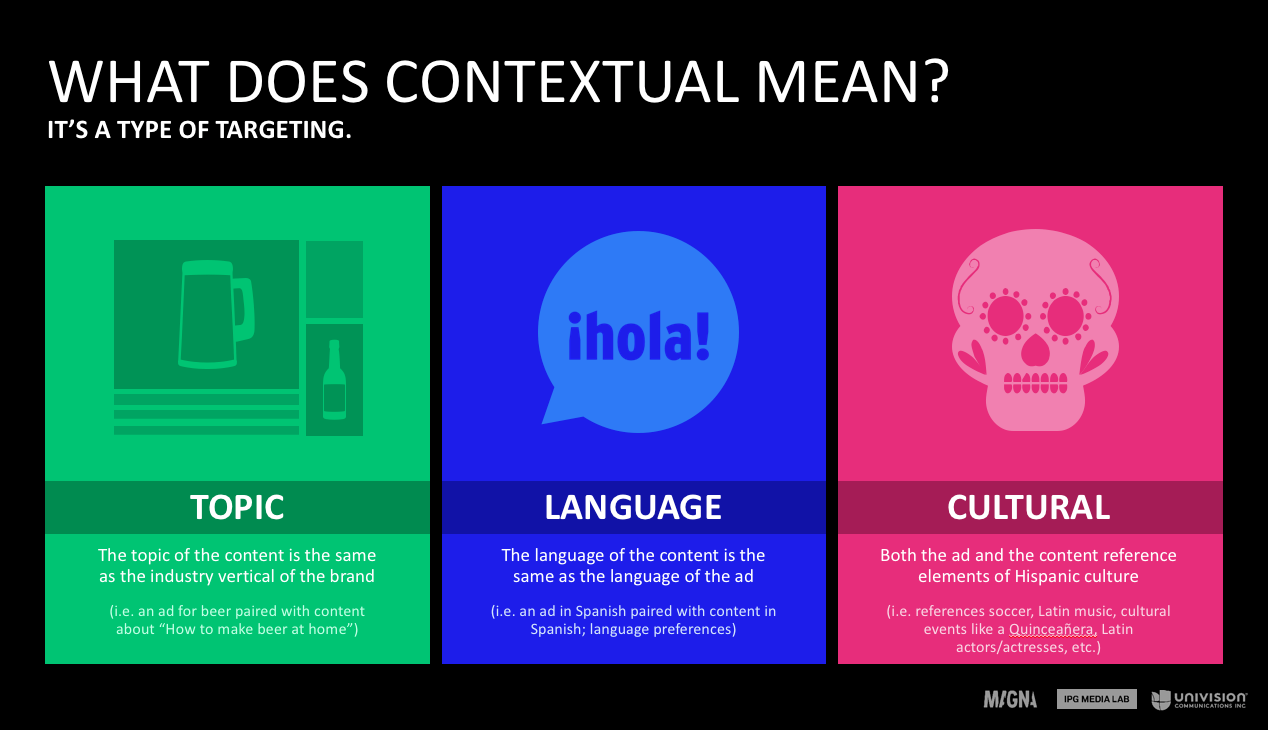Among other key insights, the study revealed that language and culture targeting in digital video ads can double the purchase intent of Hispanic consumers and increase their emotional connection with brands.
Surveying 6,000 Hispanic consumers, the study is the first of its kind to include mobile face-tracking in Hispanic research. "We wanted to understand the role of language and context in digital advertising, including mobile and emotional facial coding to gain deep insights," said Roberto Ruiz, Executive Vice President, Insights and Analytics at Univision.

I sat down with Ruiz and Kara Manatt, Senior Vice President, Intelligence Solutions Strategy at MAGNA to delve more deeply into how the right targeting can connect brands with the Hispanic consumer.
Charlene Weisler: Tell me how targeting can impact ad receptivity among Hispanics.
Kara Manatt: We tested three types of targeting. The first, Topic targeting -- when the topic of the ad is related to the topic of the content it appears in front of -- replicated what we tested among a general audience. An example would be content on the health benefits of owning a cat that has a pre-roll ad for a cat food brand. Obviously, there is a strong connection between the product being advertised and the editorial context in which it appears.
The second type that we explored in the study was Language targeting, which is when the language of the ad is matched to the language of the content. For example, Spanish-language pre-roll ads that run into Spanish-language video content.
Cultural targeting was the third area; that is when an ad speaks to Hispanics through culture. This can be a bit trickier to nail down since there are a lot of different ways to do that, such as through music, food and specific Latino events. In Cultural targeting you align an ad that connects on a cultural level with content that does the same thing.
Weisler: What were the major takeaways from the study?
Manatt: The key findings for us were the big differences in persuasion metrics, particularly the really important and hard-to-move metrics like brand favorability and purchase intent. Using language and cultural targeting to double purchase intent was the No. 1 key takeaway; we saw double the impact from merely changing the environment and not the ad. The other takeaway was that it helps build a relationship between the brand and the consumer. Hispanics are particularly sensitive to cultural messaging from an advertiser. They are receptive to the brand going the extra mile by speaking to them in their own language and making that cultural connection. This is not lost on the consumer. Again, notably you are not changing the ad. You are only changing the environment.